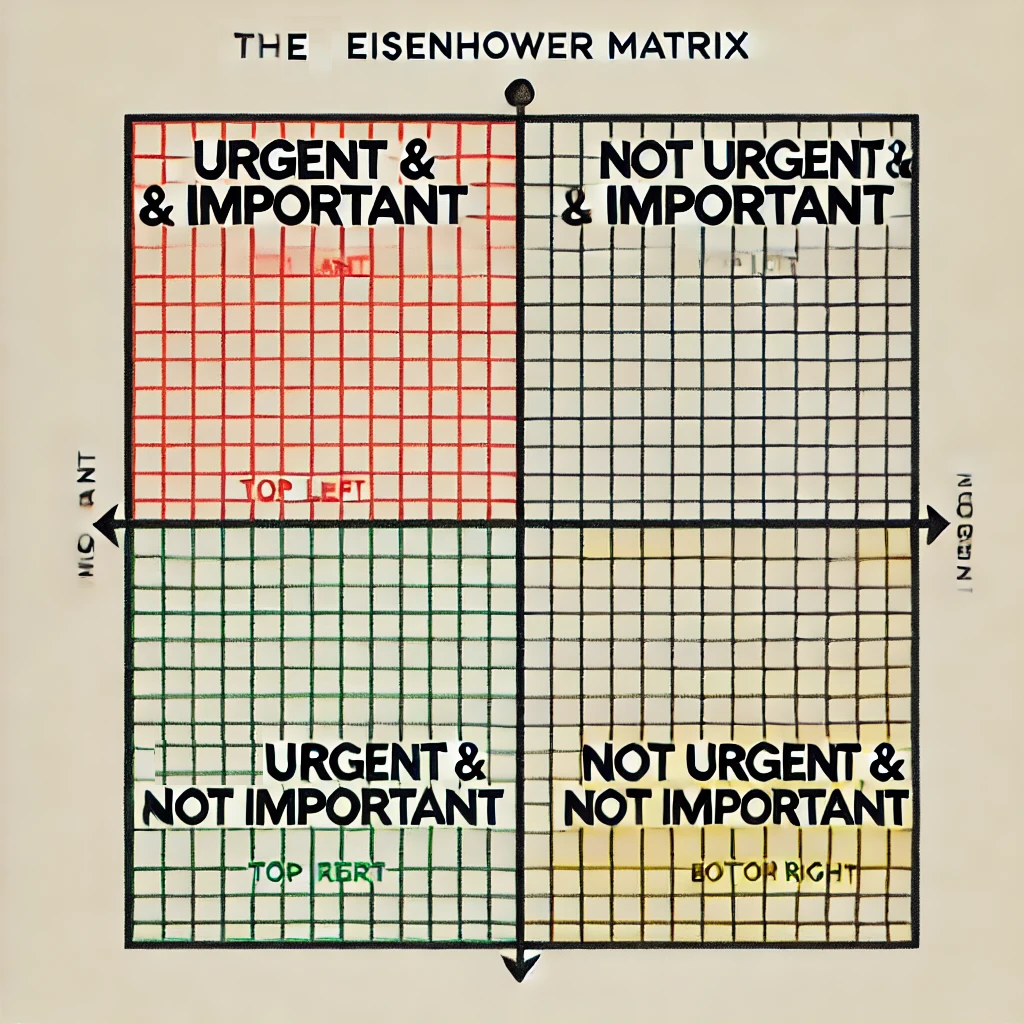What’s the one resource we all have in equal measure? Time. Yet, how often do we feel like we’re running out of it? According to a Forbes survey, nearly 80% of professionals feel they don’t have enough hours in the day to meet their goals. The issue isn’t the amount of time—it’s how we use it.
Stephen Covey, author of The 7 Habits of Highly Effective People, famously said, “The key is in not spending time, but in investing it.” And that’s the heart of effective time management: treating every minute as a deliberate investment rather than a passive expenditure.
Time management isn’t about cramming more tasks into your day. It’s about prioritising what truly matters. Think of it like clearing out a cluttered room. Before adding more furniture (tasks), you need to declutter and focus on what’s essential.
In this article, we’re diving deep into time management methods that work. From prioritisation frameworks like the Eisenhower Matrix to techniques like time-blocking and the Pomodoro method, you'll learn actionable ways to regain control of your schedule. No fluff, no overused buzzwords—just clear, effective strategies that can transform how you approach your day.
Ready to stop being busy and start being productive? Let’s explore the tools and techniques that will help you manage your time like a pro.
Time Management Methods That Actually Work
Now that we’ve set the stage, let’s dig into some of the most effective time management methods. These aren’t abstract theories—they’re practical tools that you can apply today.
1. The Eisenhower Matrix: Decide What’s Truly Important
President Dwight D. Eisenhower famously said, “What is important is seldom urgent, and what is urgent is seldom important.” This distinction forms the basis of the Eisenhower Matrix, a simple yet powerful prioritisation tool.
Here’s how it works:
- Quadrant 1: Urgent and Important (Do immediately). Tasks like deadlines, critical meetings, or crises belong here.
- Quadrant 2: Not Urgent but Important (Schedule). Long-term projects, strategic planning, and personal growth live in this space.
- Quadrant 3: Urgent but Not Important (Delegate). These are distractions disguised as priorities. Delegate them when possible.
- Quadrant 4: Neither Urgent nor Important (Eliminate). Social media scrolling or binge-watching? They belong here.
How to Apply It: At the start of your week, categorise your tasks into these four quadrants. Focus most of your energy on Quadrant 2. It’s where you make real progress without being overwhelmed by urgent demands.

2. Time Blocking: Take Control of Your Calendar
Ever feel like your day disappears without a trace? That’s because unstructured time has a way of slipping through your fingers. Time blocking solves this by assigning specific tasks to dedicated time slots.
Example: Instead of vaguely saying, “I’ll work on the report,” block 9:00–10:30 am for “Drafting the report.” This creates a sense of commitment and focus.
Pro Tips for Time Blocking:
- Use tools like Google Calendar or Notion to set up your blocks.
- Include buffer times between tasks to handle unexpected interruptions.
- Reserve your most productive hours for deep work.
3. The Pomodoro Technique: Beat Procrastination in 25 Minutes
If you struggle with procrastination or fatigue, the Pomodoro Technique is a game-changer. It’s simple:
- Pick a task.
- Set a timer for 25 minutes (one Pomodoro).
- Work with full focus until the timer rings.
- Take a 5-minute break.
- Repeat four Pomodoros, then take a longer 15–30 minute break.
Why It Works: Short bursts of effort are easier to sustain, and regular breaks prevent burnout.
Pro Tip: Use apps like Focus Booster or TomatoTimer to automate the process and stay on track.
4. Eat That Frog: Tackle Your Biggest Task First
Brian Tracy’s Eat That Frog! proposes a simple idea: Start your day by doing the hardest or most important task first. The "frog" is the thing you’re most likely to procrastinate on but that will have the biggest impact once completed.
Why It Works:
- Builds momentum for the rest of your day.
- Removes the mental weight of dreaded tasks early on.
Action Step: Identify your “frog” the night before and make it your first priority in the morning.
5. The 80/20 Rule (Pareto Principle): Focus on High-Impact Activities
The Pareto Principle states that 80% of results come from 20% of your efforts. Instead of spreading yourself thin, focus on the activities that drive the most significant outcomes.
How to Identify Your 20%:
- Look at past successes and identify the actions that led to the best results.
- For work: What 20% of your tasks generate 80% of your outcomes?
- For personal life: Which habits or activities contribute most to your happiness or growth?
By identifying and focusing on these high-impact tasks, you can maximise your productivity with less effort.
6. Batch Processing: Group Similar Tasks Together
Switching between different types of tasks kills productivity. Batch processing groups similar tasks to streamline your workflow.
Examples:
- Respond to all emails at once instead of sporadically throughout the day.
- Dedicate one afternoon to content creation or brainstorming instead of scattering it across the week.
Action Step: Review your task list and batch similar activities together for smoother transitions.
7. Reflect and Adjust: The Power of Weekly Reviews
Time management isn’t a one-and-done deal—it’s an ongoing process. That’s why a weekly review is essential.
How to Conduct a Weekly Review:
- Look back: What did you accomplish? What didn’t work?
- Look ahead: What’s coming up next week? What are your priorities?
- Adjust: Revise your plans based on what you learned.
Use this time to refine your strategies, eliminate inefficiencies, and celebrate small wins.
Time Management in Action: A Day in the Life Example
Let’s bring these methods together with a practical example of how you might structure your day:
- 7:00 am: Eat That Frog—Complete the hardest or most important task of the day.
- 9:00 am: Time Blocking—Attend a team meeting for one hour.
- 10:15 am: Pomodoro—Work on a strategic Quadrant 2 task for two Pomodoros (50 minutes total).
- 12:00 pm: Lunch and recharge.
- 1:00 pm: Batch Processing—Respond to emails and update project statuses in one focused session.
- 2:30 pm: Quadrant 1 tasks—Handle urgent client requests or other critical issues.
- 4:00 pm: Weekly Review—Reflect on your progress and set priorities for the coming week.
This sample day demonstrates how different time management methods can work together seamlessly to maximise productivity while reducing stress.
Practical Tools to Help You Stay on Track
Here are some tools and apps that can simplify your time management journey:
- Todoist or Asana: For task management and prioritisation.
- RescueTime: To track how you’re spending your hours and identify time-wasters.
- Notion: For time blocking, organising projects, and planning your week.
- Focus@Will: Background music specifically designed to enhance focus during deep work sessions.
- Google Calendar: To schedule time blocks and set reminders for important tasks.
The Takeaway
Time management isn’t about perfection; it’s about intentionality. Start small. Pick one or two methods that resonate with you and test them this week. Build from there.
Remember Stephen Covey’s wisdom: “Investing your time wisely transforms how you work, live, and achieve.” With these tools in your arsenal, the hours in your day are no longer something to battle—they’re something to own.
Now, it’s your turn: Which method will you try first? Share your thoughts, experiences, and success stories in the comments below!

No comments yet. Be the first to share your thoughts!